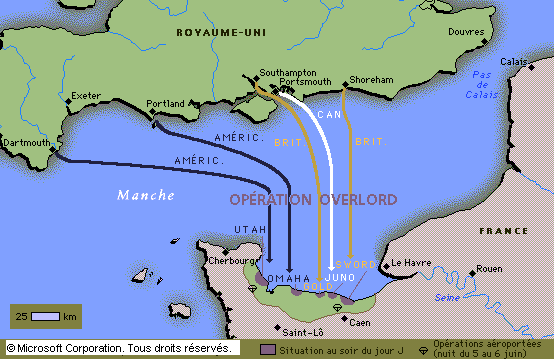

|
Photo courtesy of U. S. Naval Observatory Did you know that the Moon played a major role in the planning of one of the most important invasions ever; the invasion of the northern coast of France (Normandy) on June 6, 1944 (D-Day). The invasion is re-enacted in the movie, "Saving Private Ryan." Background . . .
Moonlight and tides . . . A decision is
made . . . The ideal tide and
moonlight situation . . . The best laid plans
. . .
More about the beaches . . .  Map courtesy of Microsoft
Term: spring tide |

 |
D-Day by Stephen Ambrose |
 |
Past pictures of the week |
 |
*More about tides |
 |
Next picture of the week |
|
Earth Science Teacher at Helena High School |